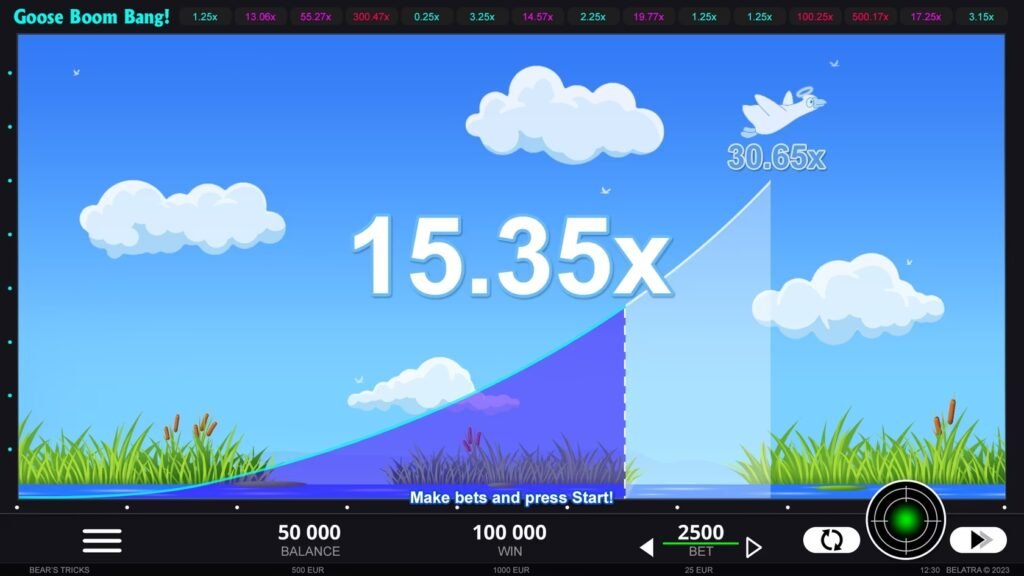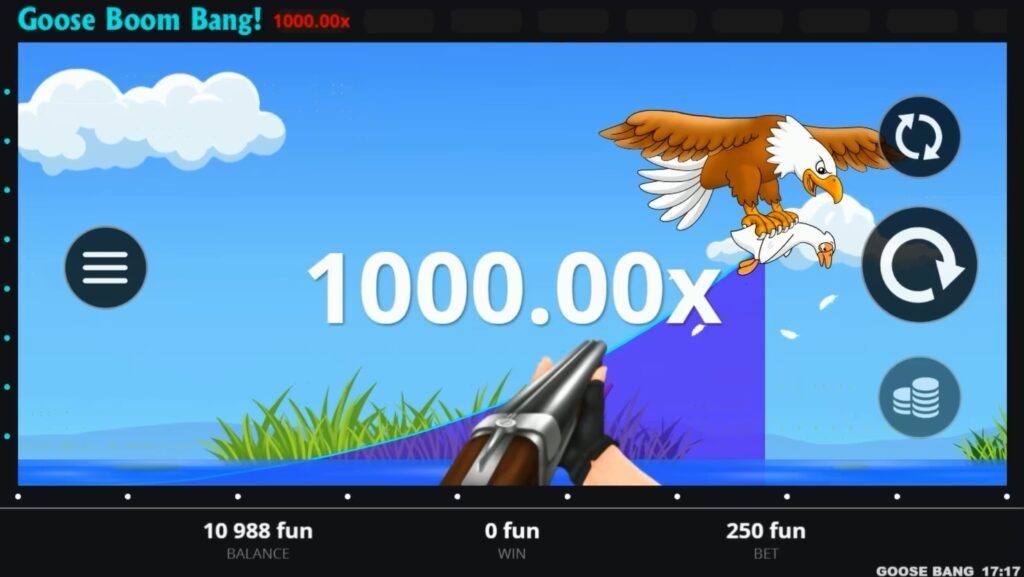
How to Play Goose Boom Bang! — Step-by-Step Guide
Welcome to our “how to play” guide for Goose Boom Bang! Below you’ll find clear rules, timing tips, cash-out discipline, practical examples with numbers, and common pitfalls to avoid. Use this page to practice a routine that fits your limits and keeps play enjoyable.
The Core Loop: Rules in Plain Words
The flow is simple: set your stake, start the round, watch the multiplier climb, and cash out before the flight ends. Earlier exits aim for steadier outcomes; later exits chase larger numbers with more risk. Rounds are independent, and no pattern forces future behavior.
Quick start: pick a small stake, target an early exit (e.g., 1.30×–1.60×), and take breaks every few rounds to reset attention.
Step-by-Step: From First Round to Routine
1) Choose a Stake That Matches Your Session Plan
Decide your total budget and time window first. A smaller per-round stake stretches playtime and gives you more decisions with less pressure. Larger stakes require stricter rules and a firmer profit-taking plan.
2) Set a Cash-Out Range Before You Start
Pick a base target for most rounds (for example, 1.40×) and an occasional stretch target (for example, 2.00×) for rare attempts. Writing the range down helps you avoid impulsive changes mid-flight.
3) Launch the Round and Read the Rise
As the multiplier increases, compare what you see with your predefined targets. If the number reaches your base range, exit confidently. If you hold for a stretch goal, accept that variance rises with every extra moment.
4) Log, Pause, Adjust
After a short set of rounds (e.g., 5–10), pause for a minute. Note whether you respected the plan. If you drifted, lower your targets or reduce stake until decisions feel calm again.
Timing Examples with Numbers
These scenarios show how choices play out. Treat them as illustrations, not predictions.
Early Exit Rhythm
Stake: $5 · Base target: 1.45× · Stretch: 1.80×
- Round A: Cash out at 1.45× → return $7.25
- Round B: Cash out at 1.50× → return $7.50
- Round C: Attempt 1.80×, exit at 1.65× → return $8.25
Focus: steady outcomes with occasional moderate attempts. Stress stays lower, decisions remain repeatable.
Late Exit Attempts
Stake: $5 · Base target: 1.60× · Stretch: 2.50×
- Round A: Hold to 2.50×, exit at 2.10× → return $10.50
- Round B: Miss stretch, exit earlier next time → learning moment
- Round C: Return to base 1.60× → return $8.00
Focus: occasional big moments, but control temptation to over-hold after a miss.
Heads-up: “Chasing” after a missed exit rarely ends well. The best fix is returning to your base plan for several rounds.
Bankroll Management That Actually Helps
Limits protect attention and keep sessions fun. Use the demo to experiment with targets and stake sizes. When using real funds, keep these habits in mind:
- Define a fixed session budget and a separate cool-down budget (for practice only).
- Lock a time limit with a phone timer; stop when it rings, even if you feel “one more.”
- Use smaller stakes after breaks; let rhythm rebuild before larger attempts.
- Take a longer pause if emotions spike — excitement and frustration both cloud timing.
Discipline is a skill. The more you practice early exits and pauses, the easier they become when it matters.
Mobile Tips for Cleaner Decisions
- Use landscape if it improves visibility of the flight path and cash-out button.
- Keep one thumb free for exit; avoid covering key indicators while the value climbs.
- Disable notifications during sessions to prevent rushed taps.
- Reduce brightness glare; eye fatigue leads to slower reactions.
Common Mistakes (and Simple Fixes)
| Mistake | Fix |
|---|---|
| Changing targets mid-flight without a reason. | Write targets before play; only adjust between rounds. |
| Raising stake after a miss to “get it back.” | Return to base stake for several rounds after losses. |
| Skipping breaks when attention dips. | Use a timer for mandatory pauses every 5–10 rounds. |
| Playing tired or distracted on mobile. | Stop, rest, and resume when focus is sharp again. |
Pre-Round Checklist
- Budget and time limit set?
- Base cash-out range and stretch target written down?
- Notifications muted and screen comfortably visible?
- Plan for a break after 5–10 rounds?
FAQ: Fast Answers
What’s the simplest safe routine to start with?
Small stake, early exit range around 1.30×–1.60×, short sets of rounds with breaks, and no chasing after misses.
Does RTP guarantee outcomes in my session?
No. RTP is a long-run measure. Short sessions can vary widely, especially with high volatility.
Is there a best multiplier to cash out?
No single number fits everyone. Pick a range that you can follow calmly and use it consistently.
How do I stop over-holding after a near miss?
Reset to your base exit for several rounds and lower stake if needed. Take a short break to reduce impulse.
Should I raise stake after a loss?
It increases risk and pressure. Most players do better by sticking to the plan and avoiding escalations.

